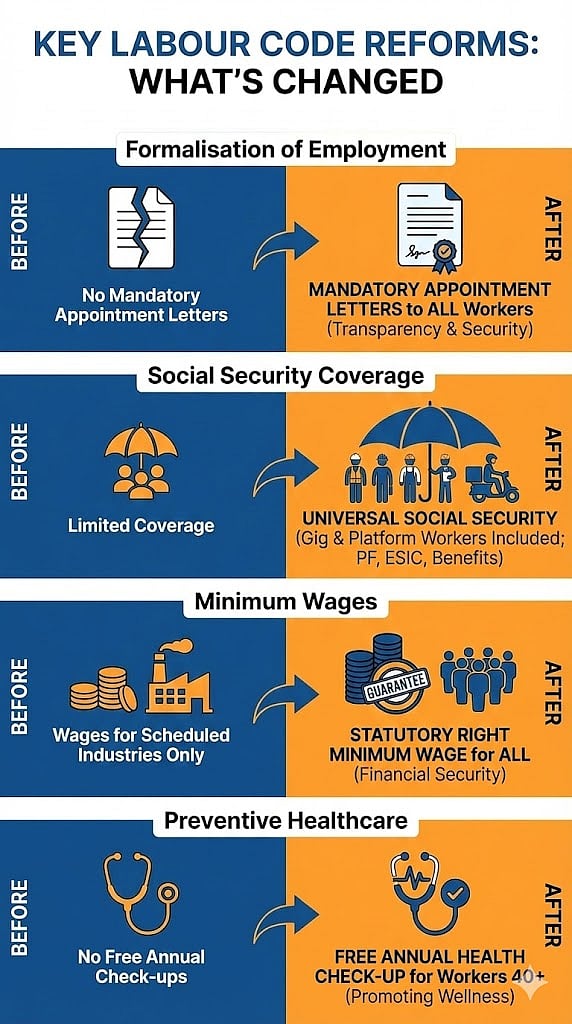New Labour Code: Team Lease CFO Explains Why Hire And Fire Will Now Be Easier
While the long-term outlook on the labour codes positive, Dathi admitted there will be short-term challenges, especially for platform companies like Zomato and Swiggy.

The newly implemented Labour Codes, which have consolidated 29 complex laws into four simplified codes, will make it significantly easier for companies to 'hire and fire', thus aiding ease of doing business, according to TeamLease's CFO, Ramani Dathi.
Speaking to NDTV Profit, Dathi explained that these labour codes will make things much more flexible for companies to manage their workforce, even if gig workers come into the organised sector.
"One of the reasons why there is informality in these kinds of jobs is also because firing is extremely difficult," she said. "So this is definitely going to help the companies find ease of doing business.”
This increased flexibility stems from the Labour Codes, which has increased the mandatory government approval for lay-offs, retrenchment and factory closures. The employee limit for this requirement has been increased from 100 workers to 300 workers.

Infographic generated by Gemini. (Source: PIB)
Dathi believes this will enable Indian manufacturers and companies to adjust their workforce without bureaucratic delays, thus making 'hiring and firing' easier.
Dathi emphasised the larger goal of the sweeping reforms: "These new labor codes will do three things: Digitise, simplify and unify."
While the long-term outlook on the labour codes positive, Dathi admitted there will be short-term challenges, especially for platform companies like Zomato and Swiggy, which employ countless gig workers.
“There will be short-term uptick in costs for sure. The biggest hit will come for platform companies and companies that employ a large number of gig employees," she said.
Nevertheless, Dathi believes that the reforms are a good thing for all parties involved, especially in the long run.
"Right now, 90% of employment in the country belongs to the unorganised sector. Even if 20, 30 or 50% move to the organised sector, that’s going to make a big difference and will have a huge impact on the overall productivity of workers. This can act as a significant driver for India’s goal of reaching a $4 trillion economy," she concluded.

